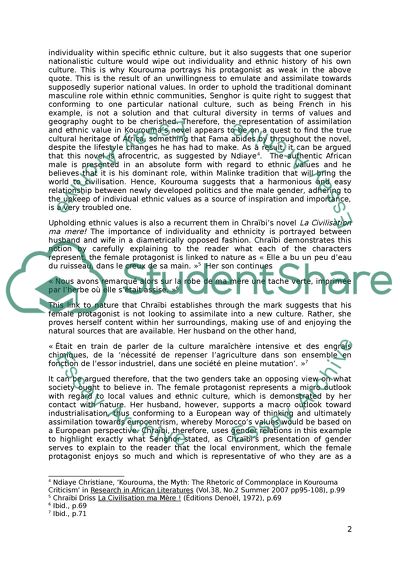Cite this document
(A Comparative Analysis of Gender Relations in Kourouma's Les Soleils Research Paper, n.d.)
A Comparative Analysis of Gender Relations in Kourouma's Les Soleils Research Paper. Retrieved from https://studentshare.org/literature/1723237-a-comparative-analysis-of-gender-relations-in-kouroumas-les-soleils-des-independances-and-chraibis-la-civilisation-ma-mere
A Comparative Analysis of Gender Relations in Kourouma's Les Soleils Research Paper. Retrieved from https://studentshare.org/literature/1723237-a-comparative-analysis-of-gender-relations-in-kouroumas-les-soleils-des-independances-and-chraibis-la-civilisation-ma-mere
(A Comparative Analysis of Gender Relations in Kourouma'S Les Soleils Research Paper)
A Comparative Analysis of Gender Relations in Kourouma'S Les Soleils Research Paper. https://studentshare.org/literature/1723237-a-comparative-analysis-of-gender-relations-in-kouroumas-les-soleils-des-independances-and-chraibis-la-civilisation-ma-mere.
A Comparative Analysis of Gender Relations in Kourouma'S Les Soleils Research Paper. https://studentshare.org/literature/1723237-a-comparative-analysis-of-gender-relations-in-kouroumas-les-soleils-des-independances-and-chraibis-la-civilisation-ma-mere.
“A Comparative Analysis of Gender Relations in Kourouma'S Les Soleils Research Paper”, n.d. https://studentshare.org/literature/1723237-a-comparative-analysis-of-gender-relations-in-kouroumas-les-soleils-des-independances-and-chraibis-la-civilisation-ma-mere.


